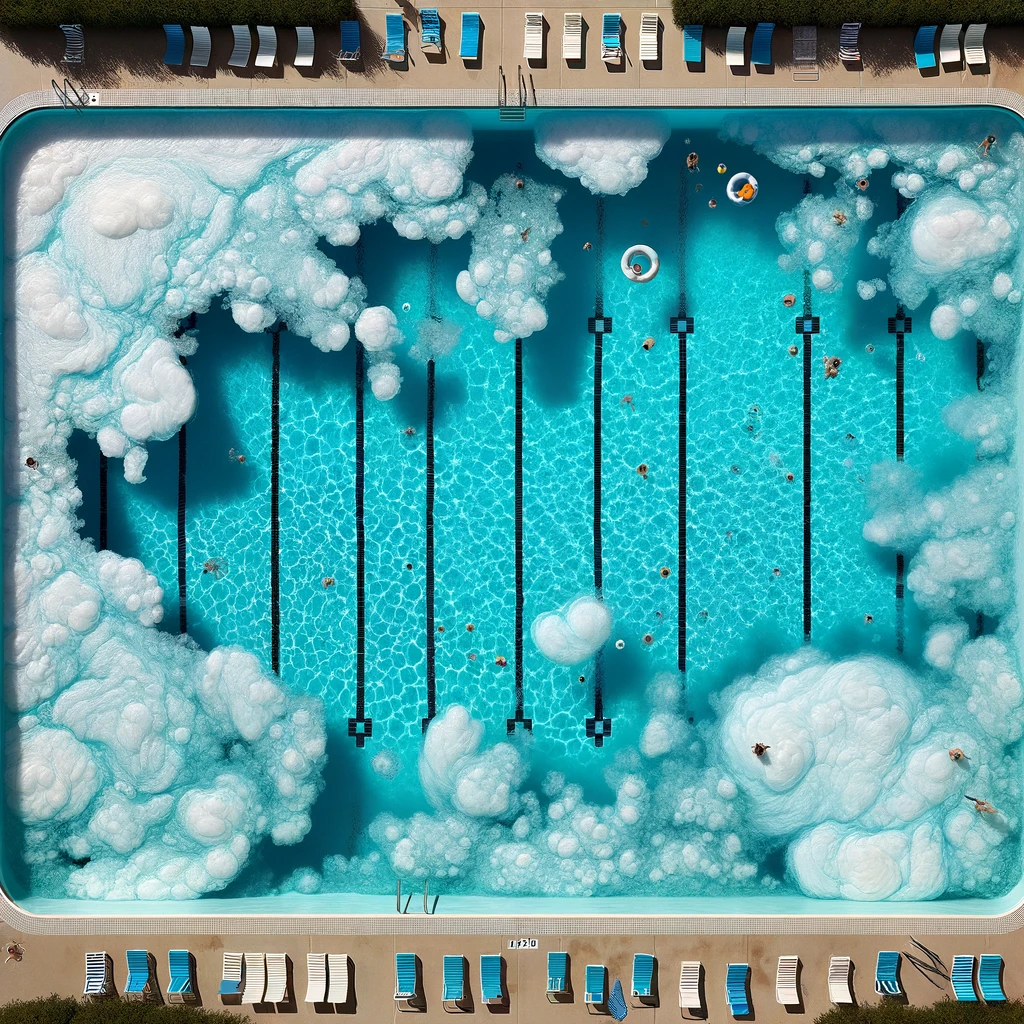The use of appropriate flocculants plays an important role in maintaining water quality. Appropriate coagulants can effectively remove suspended solids and impurities in the water body, thereby achieving the purpose of water clarification and purification. However, many people are confused about how to accurately control the dosage of flocculant to ensure the best use effect. The article discusses how to effectively control the amount of flocculant in swimming pools and provides effective suggestions for everyone.

Ⅰ. Possible effects of using too much flocculant in swimming pools
- Generate new pollutants: Excessive use of flocculants in swimming pools will cause the formation of new pollutants in the water body. Too much flocculant will react chemically with other elements in the water body to form substances that are difficult to decompose, thereby reducing the transparency and cleanliness of the water.
- Increase wastewater discharge: Excessive use of flocculant will cause a large amount of sewage discharge, thus causing potential pollution to the surrounding environment. Once a lot of sewage containing flocculant residues is discharged into the environment, it will cause a series of environmental problems and have an adverse impact on soil and water sources, which is detrimental to creating a healthy and comfortable swimming pool environment.
Ⅱ. Possible impacts caused by insufficient use of swimming pool flocculant
- Suspended solids are not fully condensed: If there is not enough flocculant used in the swimming pool, the suspended solids in the water body will not condense and settle well. This will affect the transparency of the swimming pool and prevent the fine particles in the water from settling effectively, thus affecting the health of swimmers.
- Increased organic matter and microbial residues: If flocculants are used unreasonably, harmful substances such as organic matter and microorganisms will remain in the water body. Microparticles and incompletely condensed organic matter will remain in the water body, providing space for bacteria and microorganisms to breed, increasing the content of harmful substances in the water body. This can cause potential harm to human health.
Ⅲ. Specific swimming pool placement standards
- According to the size and water volume of the swimming pool
- Small swimming pool: In small swimming pools, you can generally consider adding about 15-30 g/cubic water of flocculant.
- Medium swimming pool: The dosage of flocculant used in medium-sized swimming pools is 20~40 g/m3. The specific dosage depends on the type of flocculant used and the water quality conditions.
- Large swimming pool: Due to its large size, large swimming pools require more flocculant. Generally, 40~60 g of flocculant/cubic water is required.
- According to water quality conditions
- When the water turbidity is high, the dosage of flocculant should be increased. It is recommended to use 15 g/cubic water as the starting amount, and then adjust it step by step based on the results of the muddy water test.
- Determination of suspended particles, especially fine particles. If the concentration of suspended particles is high, 20~40 g/m3 water is appropriate.
- Measure the content of soluble substances in water, understand the concentration of organic substances, and more. Due to the different types of flocculants used, the flocculants used are also different. It is recommended to use 20 g/cubic water as the starting amount and adjust the amount step by step.
- Add the flocculant in stages rather than all at once. This helps ensure that the flocculant is evenly distributed in the water and is doing its best work.
- According to the type of flocculant
- Inorganic flocculants (such as aluminum ammonium sulfate): Inorganic flocculant can be considered to be added at 15~30 g/cubic water. This method is adjusted step by step according to turbidity and suspended particulate matter content.
- Organic flocculants (such as polyaluminum chloride): Organic flocculants are generally used in small quantities. Consider adding 10~20 g/cubic water. Adjustments should be made step by step according to the actual situation.
- Polymer flocculant: The use of polymer flocculants is relatively low. Consider adding 5 to 15 grams per cubic meter of water. Gradually adjust based on water quality test results and flocculation effect.
- Coagulant: For some more complex problems, coagulants are usually used. Depending on the water quality conditions and coagulant concentration, the amount used per cubic meter of water can range from 20 to 50 grams.
- Compound flocculant: Composite flocculants are generally composed of multiple components, and the dosage is also large. The estimated water input is 20-40 grams per cubic meter. Make step-by-step adjustments based on water quality monitoring and effects.
- Fast flocculant: Rapid coagulants generally have a fast flocculation rate and a small dosage. Consider adding 10-25 g/cubic water and gradually adjust as needed.
Ⅳ. How to put flocculant in swimming pool
- Professionals add:
- One way to do this is to hire a professional to add flocculant to your pool. However, this is costly and requires special application times, which will adversely affect the normal operation of the swimming pool site.
- Swimming pool chemical dosing pump:
- In contrast, swimming pool dosing pumps have become the first choice for many swimming pool operators. For example, the precision dosing pump can not only precisely control the dosage of flocculant and quickly release the solution but is also suitable for indoor and outdoor swimming pool environments. The installation method can also be selected according to site conditions to meet the needs of different places.
In short, mastering the correct dosage of swimming pool medication is an important part of ensuring the quality of the swimming pool water environment. After proper treatment, it can effectively remove particles in the water body and ensure that the water quality of the swimming pool remains clean and transparent. During application, the water quality should be
